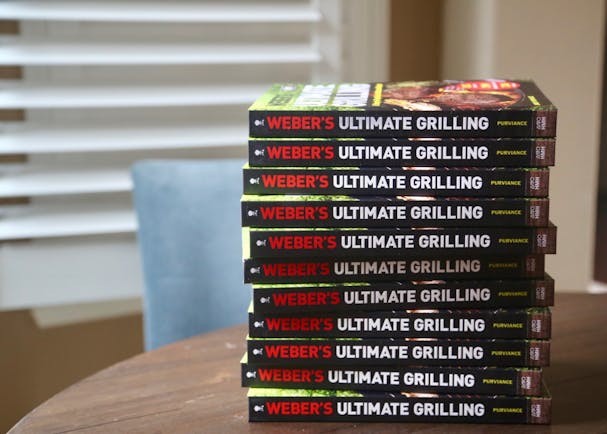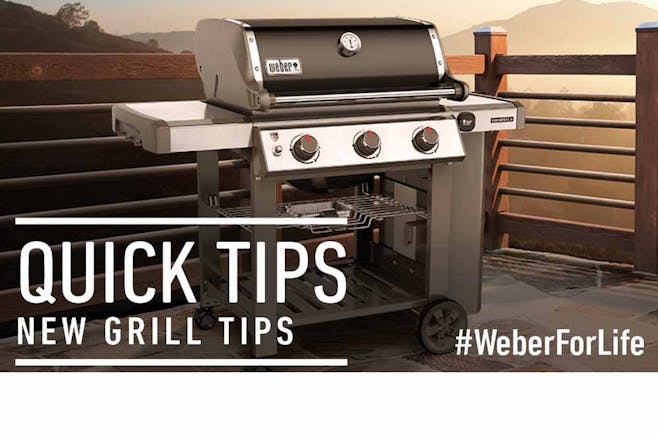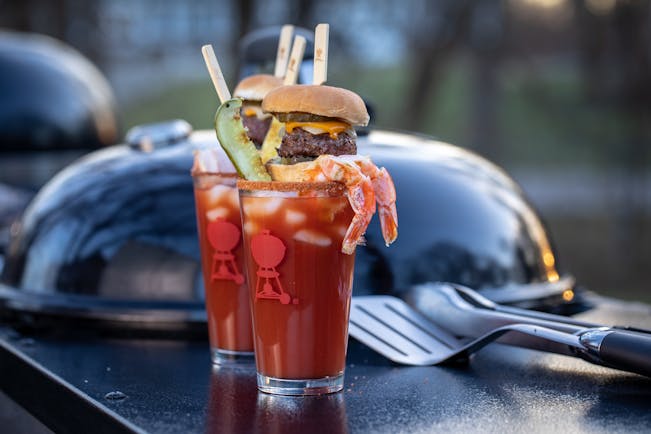Top Ten Tips for Smoking
return
Menu
One of my favorite pastimes is smoking. There’s nothing like the aroma of wood smoke, and the awesome flavors of a well-smoked meal.
With multiple smokers in my backyard, you could say this pastime is more of an obsession, so it always surprises me when someone tells me that they are intimidated by the art of smoking.
While smoking does take some finesse and knowledge, it shouldn’t be seen as a skill that is difficult and only for grilling experts. With a little time and practice, everyone can become an expert.
So…grab your wood chips and check out Weber’s Top Ten Smoking Tips from our cookbook Weber’s Smoke™ by Jamie Purviance.
TOP TEN TIPS FOR SMOKING
- START EARLY: Many of the flavor compounds in smoke are fat and water soluble, which means that whatever you are cooking will absorb smoky flavors best when it is raw. As the surface cooks and dries out, the smoke does not penetrate as well.
- GO LOW AND SLOW (MOST OF THE TIME): Real barbecue is cooked slowly over low, indirect heat—with wood smoke—because that's a traditional way to make sinewy meats so moist and tender that you hardly need teeth. But don't miss easy opportunities for adding sweet wood aromas to foods that are grilled over a hot fire for just minutes, like steaks, shrimp, and even vegetables.
- REGULATE THE HEAT WITH A WATER PAN: Big fluctuations in smoking temperatures can tighten and dry out foods. Whenever you cook for longer than an hour with charcoal, use a pan of water to help stabilize the heat and add some humidity. Obviously a water smoker already has one, but for a charcoal grill, use a large disposable foil pan, and don't forget to refill it.
- DON'T OVERDO IT. The biggest mistake rookies make is adding too much wood, chunk after chunk, to the point where the food tastes bitter. In general, you should smoke food for no longer than half its cooking time. Also, the smoke should flow like a gentle stream, not like it is billowing out of a train engine.
- WHITE SMOKE IS GOOD; BLACK SMOKE IS BAD: Clean streams of whitish smoke can layer your food with the intoxicating scents of smoldering wood. But if your fire lacks enough ventilation, or your food is directly over the fire and the juices are burning, blackish smoke can taint your food or lead to unpleasant surprises when you lift the lid.
- KEEP THE AIR MOVING: Keep the vents on your charcoal grill open and position the vent on the lid on the side opposite the coals. The open vents will draw smoke from the charcoal and wood below so that it swirls over your food and out the top properly, giving you the best ventilation and the cleanest smoke. If the fire gets too hot, close the top vent almost all the way.
- DON'T GO GOLFING: Smoking is a relatively low-maintenance way of cooking—but remain mindful and be safe. Never leave a lit fire unattended, and check the temperature every hour or so. You might need to adjust the vents or add more charcoal.
- TRY NOT TO PEEK: Every time you open a grill, you lose heat and smoke—two of the most important elements for making a great meal. Open the lid only when you really need to tend to the fire, the water pan, or the food. Ideally take care of them all at once—and quickly. Otherwise, relax and keep a lid on it.
- LET THE BARK GET DARK: Barbecued meat should glisten with a dark mahogany crust that borders on black. This "bark" is the delicious consequence of fat and spices sizzling with smoke on the surface of the meat and developing a caramelized crust over the luscious meat below. Before you take the meat off the grill or wrap it in foil, make sure the bark is dark enough that it tastes like heaven.
- FEATURE THE STAR ATTRACTION: The main ingredient in any smoked recipe is like the lead singer in a rock-and-roll band. Every other flavor should play a supporting role. In other words, don't upstage something inherently delicious with a potent marinade, heavy-handed seasonings, or thick coats of sauce. Harmonizing flavors in ways that feature the main ingredient is what separates the masters from the masses.
©2012 Weber-Stephen Products LLC. Weber's Smoke™ by Jamie Purviance. Used with permission.



